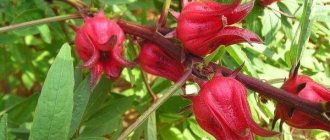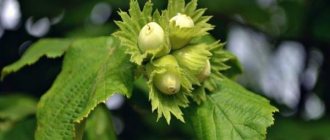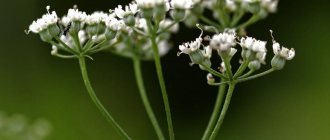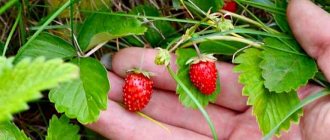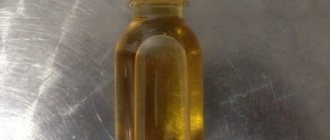Monarda is an ornamental plant that is usually grown in the garden and flower garden. Few people know that beautifully flowering bushes are popular in alternative medicine.
Due to its numerous medicinal properties, plant materials are used in the treatment of serious diseases and are used for preventive purposes.
Before you start consuming or externally using monarda-based products, it is recommended to understand the beneficial qualities of the plant, consult a doctor, and study the requirements of traditional medicine.
Plant growth, collection of raw materials, storage rules
Monarda, due to its persistent citrus scent, is often confused with bergamot, although this is a mistake. Bergamot is a low tree, monarda is a herbaceous shrub grown for decorative purposes.
The appearance of the ornamental plant is quite remarkable - an erect stem growing up to a meter, oblong leaves with small teeth, flowers collected in small inflorescences, located along the entire height of the perennial.
The plant is quite unpretentious and frost-resistant, so the herbaceous shrub can be grown even in unstable climatic conditions. Prefers nutritious soils rich in beneficial elements. It grows naturally throughout Europe, America, and Asia.
All parts of the perennial are used for treatment - flowers, young leaves, shoots. Herbal raw materials are not sold in pharmacies - you will have to make your own supply of the healing component for preparing homemade medicines.
It is recommended to stock up on valuable medicinal raw materials throughout the spring and summer. It is at this time that the bush accumulates the greatest amount of healing substances.
After collecting plant materials, dry them - spread all parts of the plant separately on small wide baking sheets, place them under ventilated canopies or in the oven.
When drying indoors, you should remember that high temperatures are not welcome - the essential oils that abound in flowers and leaves of monarda begin to destroy.
After drying, send the plant material for storage - fill glass containers and canvas bags. Store at room temperature in a low humidity area. Useful qualities remain unchanged for 2-3 years.
Monarda red
Modern selection offers a huge number of varieties and hybrids of monarda. Sometimes names are either duplicated or incorrect. This is due to the fact that the breeding of varieties occurs mainly abroad, which is why there is confusion in the names.
This also applies to red monarda - in Transcarpathia and Ukraine the plant is called red rue, and should not be confused with fragrant rue. In fact, the plant belongs to the species Monarda Rubra. Its homeland was also America, but it was successfully induced in Europe.
Perennial herbaceous bushes grow up to 50-70 cm in height. The stems are numerous, tetrahedral. The leaves are green, sometimes with reddish veins and stipules. The flowers are elongated, tubular. Collected in inflorescences in the form of heads. The color of the petals and bracts is red.
Monarda red has a delicate, lemon-honey aroma. It is an excellent honey plant. The plant is frost-resistant; it can grow in one place in the garden for up to 10 years. Used as an ornamental, spicy and medicinal crop.
Due to the confusion in the names, gardeners are still arguing whether the red monarda can be considered a separate species or is it still a subspecies of the fistula monarda.
Monarda doublet
The history of the double monarda is connected with the history of the North American Indians from the Oswego tribe. This is explained by the fact that since ancient times, representatives of the tribe have added the flower to tea. Until now, this drink is called Oswego tea, and the plant itself is called Indian feather.
The root system is powerful and branched. The stems are straight, tetrahedral, with sparse fibers. In height from 1.2 to 1.5 m.
The leaf blades are light green, oval, elongated. Up to 8 cm wide, up to 15 cm long. The veins are green or reddish, the lower side is slightly pubescent, the upper side is most often bare.
The flowers are small, collected about 30 pieces in inflorescence heads. In wild varieties, they are colored in purple tones; the size of the inflorescences increases due to bracts of the same color. The corollas are irregular in shape, the stamens protrude outward.
Varietal monardas can bloom in white, pink, and red. Flowering time begins in early July and continues throughout the summer. At the end of August - beginning of September, the fruit-nut with small seeds ripens.
The plant has a delicate aroma with notes of citrus fruits, most often the smell of orange and mint is felt in it. It was the aroma of the double monarda that the North American Indians liked and they brewed tea from the young leaves and inflorescences of this plant.
They drank tea for digestive problems, colds, and inflammatory processes. Throughout the world, the popularity of Monarda duplicata as a medicinal plant continues. Cultivated since the end of the 17th century, hybrid forms of the flower can most often be found in modern gardens.
We advise you to read: Bear bile: medicinal properties, uses and recipes
Monarda fistulata
Wild bergamot or Monarda fistula is native to North America. The herbaceous perennial came to Europe several centuries ago, where it successfully acclimatized.
The plant has a rhizome with dense fibrous roots. Shoots up to 110 cm high. Varieties have been bred whose height does not exceed 10 - 30 cm.
The shoots are thin, well branched, tetrahedral in shape. They can be either green or reddish. The leaves are elongated, ovate, and have the same color as the stems.
The flowers are small, bisexual. The corollas are two-lipped, elongated into a narrow tube. The flowers are collected in spherical inflorescences - heads. Color ranges from smoky white to dark red and purple. Flowering time is June-July. It blooms in the second or third year of life.
Currently cultivated as an essential oil plant in the USA, Canada, Poland, Yugoslavia, Crimea and the Caucasus. In private gardens it is grown as a spicy, ornamental and medicinal plant.
Compared to double monarda, fistula is less winter-hardy, although there are examples of cultivation in the Leningrad and Moscow regions in a perennial culture. The mostly hybrid monardas available to modern gardeners are not always of clear origin.
Useful properties of monarda
The peculiarity of monarda is its high content of essential oils, which have a beneficial effect on all human systems and organs.
Plant-based products can also be used to treat diseases of the skin, hair, and nails. Traditional treatment is recommended for use against many ailments, including:
- inflammatory processes in the oral cavity,
- sore throat, tonsillitis,
- diseases of the genital organs, urinary tract,
- fungal infection on the skin,
- rashes, purulent pimples,
- skin diseases,
- abscesses, non-healing wounds, burns,
- flu, colds,
- violation of metabolic and digestive processes,
- diseases of the digestive organs,
- dandruff, disturbances in the production of sebum on the scalp.
Monarda will bring considerable benefits for diseases accompanied by a severe cough. The active substances contained in plant materials help thin mucus, remove phlegm, and facilitate expectoration.
Monarda medicinal properties and contraindications
The ornamental plant monarda is a relative of the mint herb and lemon balm plant. Wild monarda flower can be found in North America and other countries.
The plots were first grown to produce essential oil with a persistent citrus aroma. The beneficial properties of monarda have not yet been fully studied, but even those about which we know enough to use monarda as a medicinal and food plant.
Treatment of fungus on nails
A concentrated infusion of young monarda leaves is one of the most effective folk remedies against fungal diseases.
Timely use of a home remedy will help you cope with the infection in the early stages, preventing the lesion from spreading to healthy tissue. Preparation:
- Grind the dry leaves of the plant using a mortar; you will need a teaspoon of the prepared powder.
- Pour boiling water (100 g) over the vegetable powder.
- Infuse with a lid; to increase the concentration of beneficial elements, wrap the container in a towel until completely cooled.
- Strain and place the product in the refrigerator.
Use lotion liquid. Warm the mixture a little, soak a cotton pad, and place it on the nail plate affected by the fungus. Secure with a bandage and leave overnight.
Repeat daily. It is allowed to alternate with pharmaceutical drugs - apply ointment or anti-fungal gel during the day.
Pre-steaming the nail plates will help increase the effectiveness of the healing liquid. Use soda baths (30 grams of sodium bicarbonate per 2 liters of water).
Benefits and uses of monarda essential oil
Monarda oil unfairly remains in the shadows compared to more popular essential analogues. Its greatest benefit lies in its bactericidal properties.
Research conducted by the Yalta Research Institute of Physical Methods of Treatment and Medical Climatology has proven the powerful effect of monarda in the fight against bacteria such as staphylococcus, streptococcus, Klebsiella pneumoniae, as well as such a difficult fungus as candida. When researching the benefits of monarda oil, its persistent and effective effect was recorded in comparison even with such a well-known antiseptic as tea tree oil.
Beneficial properties of monarda essential oil:
- inhibits the aggressive pathogenic environment of bacteria,
- restores immunity,
- eliminates various inflammations,
- heals wounds and cuts,
- Removes pain
- stimulates brain function and prevents aging diseases.
In addition, monarda oil can protect the body from the harm of radiation and dangerous toxic substances.
It can be used only after the recommendation of a doctor.
This useful and universal oil can be used either in its pure form or mixed with another base oil in a ratio of approximately 1:2.
Garden bergamot oil is used to treat skin injuries in the event of wounds, scratches, cracks, burns, bedsores above the second degree, and diaper rash. To do this, add 2-3 drops of oil per bandage with each dressing.
The benefits of monarda essential oil have also been found in the treatment of inflammation of large joints. In such cases, add 2 drops of oil to the rubbing products.
For fungal diseases, monarda is used both independently and as part of complex therapy with antifungal drugs. The benefits are guaranteed only when the essential oil is used correctly. For example, when treating nails on your own, they begin to apply it only after removing the damaged nail plate.
Monarda essential oil is also used in aromatherapy. It can become a reliable protection against colds during the autumn and winter colds and an excellent assistant for spring vitamin deficiency.
How to use:
Add 3-6 drops of monarda oil to the aroma lamp per 16 meters of area of the room in which it will be located.
When dealing with room dampness, you need to dissolve up to 10 drops of monarda essential oil in 0.3 - 0.4 liters of warm water. All damp places should be sprayed with this mixture, and the room must be ventilated after an hour.
The benefits of Monarda are so universal that even the cosmetic industry uses Monarda oil to create perfume potpourri.
For various diseases
Garden bergamot has a wide range of beneficial effects and is used in the form of:
- decoction,
- essential oil,
- tea.
Benefits of Monarda for ailments:
Boils. Monarda essential oil ideally treats purulent rashes and chronic inflammation. When working with an abscess, wipe the inflamed area of skin with a decoction of the plant, apply boiled leaves, and leave for some time. Essential oil is also useful: apply 1-2 drops to the abscess a couple of times a day. Can be diluted in water or base oil in a 1:1 ratio.
Diarrhea, colic. For diarrhea and excessive gas formation, it is recommended to drink tea with bergamot. The plant well normalizes the functioning of the intestinal microflora, prevents stool disorders, gently removes harmful substances from feces,
Toothache. Rinse your mouth with the decoction several times a day. The plant has an antispasmodic effect, eliminates pain,
Anemia. Tea will help here. Regular use of it for several weeks increases the level of hemoglobin in the blood,
Infections and itchy eyes. Remove all makeup first. The eyes are washed with a decoction of the plant in the morning and evening. Each eye separately. This is important so that germs do not pass from one eye to another,
Acne. Wash a clean face with monarda decoction in the morning and evening. This has a drying, antimicrobial effect on acne, normalizes sebum production, thereby reducing the appearance of new breakouts,
Nail fungus. Garden bergamot has proven its benefits in destroying the pathogenic environment of microbes, eliminating excess sweating and unpleasant foot odor. Three times a day, apply 1 drop of oil to the affected nail and rub in. Treatment is carried out for 10 days.
Another option is baths: add 3 tablespoons of sea salt to 1 liter of warm water. 2-3 drops of iodine and monarda oil are first added to the salt. You can add fir oil. Feet must be kept in the bath for half an hour,
Seborrhea. To cure dandruff, add a few drops of monarda essential oil to conditioner and shampoo.
Chronic fatigue, depression, nervous breakdowns, hysterical state. To normalize the functioning of the nervous system, take a relaxing bath, drink tea with monarda, keep your feet in a basin with a decoction and massage with essential oil. For baths, take 10 drops of oil and a base - 1 tablespoon of honey, salt or sour cream. For massage, use a few drops and mix with grape oil in a 1:1 ratio.
Vomiting, intoxication, poisoning, genital diseases. Brew and drink tea with monarda 2-3 times a day.
In cosmetology
The beneficial properties of the monarda flower are used to combat skin diseases: acne, acne, redness, acne, nail fungus, dandruff. For this purpose, decoctions and masks are prepared, and monarda essential oil is also added to shampoos.
Face mask recipe
2 tablespoons of garden bergamot flowers are brewed with 200 - 250 ml of boiling water, left for 10 hours, then mixed with clay (white, blue) until creamy and then the mixture is applied to the face. After drying and rinsing off.
You can also use the decoction without adding clay to wash your face in the morning and evening.
Monarda essential oil has the ability to actively fight wrinkles, so it is added to creams. After applying the cream to your face, you need to massage the skin well: this will provide it with elasticity and a lifting effect.
Tea to boost immunity and improve overall health
In order to increase the body's defenses, improve well-being, and general health, it is recommended to regularly drink delicious tea, rich in vitamins and beneficial elements.
The drink is also recommended to be consumed during the period of recovery of the body after a serious illness or surgery.
Tea will be especially useful in autumn, winter, and during the time of colds - the remedy will serve as an effective prevention, protect against viruses and infections. Step by step recipe:
- Rub dry monarda flowers (10 grams) into fine crumbs with your hands.
- Brew the vegetable mass with boiled water (200 ml).
- Cover the cup with a saucer and leave for half an hour.
- To improve the taste, it is recommended to add bee honey (10-15 g).
Drink the drink once a day, preferably in the morning. The individual characteristics of the body should be taken into account. If you have a negative reaction to bee products, it is recommended to stop adding honey and replace it with a small amount of sugar.
Use of monarda in cosmetics
Monarda is used in cosmetics as biologically active additives in the preparation of creams and balms. The plant gives creams a pleasant aroma and, thanks to its essential oils, can replace preservatives. For example, monarda is used in, specializing in the production of natural cosmetics, without artificial preservatives.
For cosmetic defects, the medicinal properties of monarda will also come to the rescue; the contraindications here are minor (see below). Monarda is effective in the treatment of acne and peeling skin. The use of cosmetics with monarda gives a rejuvenating effect.
Monarda will also be useful for strengthening hair and preventing hair loss.
Increased potency, treatment of diseases of the genitourinary system (for men)
Representatives of the stronger sex will find a remedy based on monarda especially useful. Some elements contained in plant materials help increase potency, improve libido, and prevent diseases of the genitourinary system.
For inflammatory processes in the urinary tract, home medicine also has no equal - the decoction will quickly stop the spread of inflammation and relieve pain. Preparation:
- Finely chop the young leaves and shoots of the plant (30 grams) with a sharp knife, rub with your hands, and leave for a quarter of an hour.
- After the juice appears, pour boiling water (200 ml) over the vegetable mixture.
- Leave to brew (strain after half an hour).
- Divide into two parts, put one in the refrigerator, and drink the second in the morning before breakfast.
Continue treatment in the evening, two hours before going to bed - take the rest of the home remedy. It is forbidden to add additional ingredients - the effectiveness of treatment will be significantly reduced.
The duration of treatment is three weeks. Allow the body to rest, repeat the course after a break of one and a half weeks.
It is allowed to combine drug treatment and homemade decoction, but only after medical consultation, having discussed an integrated approach with a specialist.
Drink for pregnant women
During pregnancy, women are recommended to drink a tasty aromatic drink only in the early stages. The active components contained in the liquid will compensate for the lack of certain substances in the body, the amount of which decreases during pregnancy, relieve attacks of toxicosis, and alleviate the general condition. Step-by-step folk recipe:
- Mix chamomile and monarda flowers (15 g each).
- Bring water (400 ml) to a boil and brew the herbal ingredients.
- Place on the stove and cook at a low boil for 3-4 minutes.
- Remove and allow the liquid to cool at room temperature.
Drink the drink throughout the day in small portions, only 4-5 sips. We should not forget that during pregnancy the female body is unpredictable and can react negatively to even the most harmless compounds.
Be sure to monitor your overall health after each use of the product. Malaise, dizziness, digestive disorders are signals to refuse to continue treatment.
What kind of plant is this
There are 3 completely different plants with the same name “bergamot”. They are often confused with each other, although they have different properties.
Stand out:
- Bergamot pear, translated as “bey pear”, originates from the Ottoman Empire.
- Orange-bergamot is a citrus reminiscent of lemon and lime, originally from the Italian town of Bergamo: hence the name “bergamot”;
- Monarda herb, or garden bergamot, with a delicate lemon flavor and aroma similar to citrus bergamot.
Monarda is an aromatic medicinal honey plant of the Lamiaceae family with bright flowers from white to cherry tones, often cultivated in summer cottages. The plant was brought to Europe from America in the 20th century. It received its name in honor of the Spanish botanist Monardes, who first described it.
Treatment of rashes, acne, pimples
For skin diseases, rashes, and large pimples, it is recommended to use a concentrated decoction at home as a daily lotion.
The product will cleanse the skin of acne, even out the shade, saturate the epidermal tissue with useful elements, and increase turgor.
It is recommended to use the liquid as a lotion, especially if the problem is too serious. Step by step recipe:
Place flowers and plant leaves (use dry or fresh plant materials) in a container, you will need 25 grams. main component.
- Add sage, calendula (15 g each).
- Steam with boiling water (200 ml).
- Place in a steam bath and leave covered for half an hour.
- Strain and once completely cooled, store in cold conditions.
Treat the skin with the prepared product 2-3 times a day. It is recommended to wash your face before the procedure using natural foams and gel - homemade lotion works more effectively on clean dermis.
If the decoction is used as a lotion, soak a cotton pad with the heated solution and place it on the problem area. Remove and rinse with warm liquid after a quarter of an hour.
Use in cosmetology
Monarda essential oil, decoctions and infusions from it are an excellent cosmetic product. First of all, they can be used in the fight against acne. To do this, you need to wash your face with a decoction of the herb or add a few drops of oil to a cleansing lotion and wipe your skin with it.
The oil of this plant copes well with age-related problems, smoothes wrinkles, restores water balance and nourishes the skin. To obtain a cosmetic effect, just add a few drops of oil to any suitable cream.
A warm compress with essential oils restores the skin very well. Taking into account the fact that monarda oil is not used in its pure form, the procedure will require:
- water, hot 500 ml;
- monarda oil 1 drop;
- rose oil 1 drop;
- rosemary oil 1 drop.
- Drop all three types of oil into water.
- Moisten a natural cotton cloth in it.
- Squeeze it out and apply it to the skin of the face, leave for a quarter of an hour.
This compress can be done once every 5-6 days.
Monarda essential oil can be used to restore hair. To do this, just add 1-2 drops of oil to 20 g of shampoo, apply to hair and rinse after 5 minutes.
We advise you to read: Calamus root: medicinal properties and contraindications
Despite the fact that monarda oil rarely causes allergies, before use you still need to apply a drop of the product to the skin on the inside of the elbow. If no itching and/or redness appears after 15 minutes, the product is safe.
Treatment of colds and coughs
If you have a strong cough or difficulty in expectoration, it is recommended to undergo treatment with an infusion of monarda, which will quickly thin out the mucus and cause active discharge of sputum.
The remedy is allowed even for children, but first it is better to consult a doctor, who should authorize treatment at home with traditional medicines. Preparation:
- Mix monarda flowers, licorice root particles (20 g each).
- Pour the vegetable mixture with water (250 ml).
- Place on the stove, boil, and simmer, reducing heat to low, for 5 minutes.
- Infuse and strain after an hour.
If the child is not allergic to bee products, it is allowed to add honey, which improves the taste of homemade medicine. It is necessary to monitor the baby’s health after the first doses.
If adverse reactions occur (nausea, redness of the skin, intestinal disorders), stop treatment immediately.
Give your child a tasty drink three times a day, 35-40 ml. It is advisable to take it after a meal - this reduces the risk of irritation and upset.
Treatment of eczema
For eczema, alternative medicine recommends making lotions using a rich decoction of monarda shoots.
Use only young parts of the plant, prepare the product immediately after harvesting the plant material. Step by step recipe:
- Turn fresh shoots of the plant (50 g) into a homogeneous fine pulp using a sharp knife.
- Pour boiled water (220 ml) over the vegetable mixture.
- Place on the stove, stirring, and cook for 5 minutes.
- Filtration is carried out after complete cooling.
Apply lotions to the affected areas of the skin. Be sure to warm up the liquid and only then begin the procedures.
The duration of the manipulation is half an hour. Complete the procedure by blotting off any remaining liquid with a soft cloth. It is not recommended to rinse the skin after using the home remedy.

